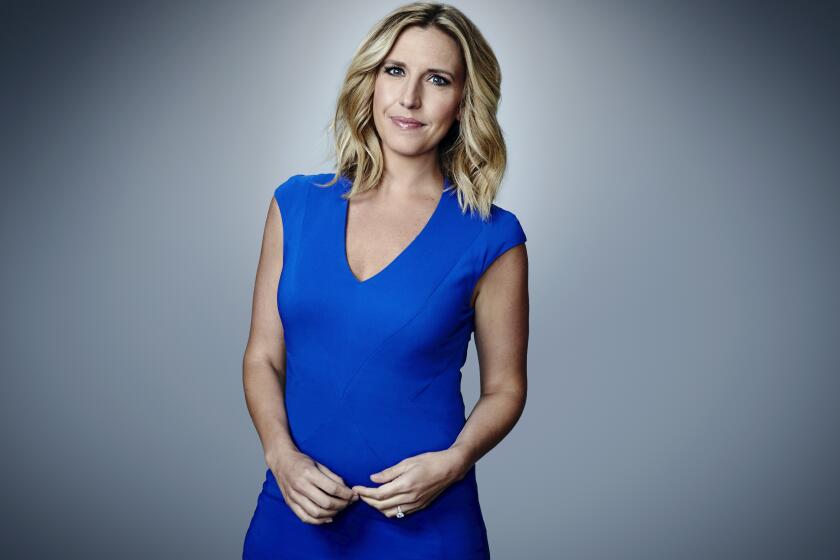Tennis Channel faces off with Cablevision for U.S. Open coverage
There’s not much love in this tennis matchup.
For nearly two weeks, the Santa Monica-based Tennis Channel has been slamming Cablevision Systems Corp., the dominant cable operator in metropolitan New York, in an ad campaign that accuses it of “dropping the ball” by not carrying the channel. After four years of trying to win a spot in Cablevision’s lineup, the channel was frustrated because a deal seemed out of reach on the eve of its first-ever coverage of the U.S. Open in New York, which begins Monday.
The channel distributed fliers in New York neighborhoods urging consumers to call Cablevision and demand that Tennis Channel be added. It dispatched mobile billboards to buzz around Cablevision’s Long Island headquarters and jeer: “Thanks for Nothing.”
It looked like Cablevision’s 3.1 million customers in New York would miss out on Tennis Channel’s coverage. But this week, Cablevision figured out a way to beat Tennis Channel at its own game. The large cable company joined a small Kansas nonprofit cooperative that negotiates group discounts on behalf of its members, which are largely rural, mom-and-pop operators.
Because the National Cable Television Cooperative already had an agreement with Tennis Channel, it said its newest member -- Cablevision -- had the right to piggyback onto that contract and provide the channel. Cablevision wants to make it available through premium packages to about 10% of its customers.
“This is clearly a way for Cablevision to try to get around having direct negotiations with the Tennis Channel,” said analyst Derek Baine of SNL Kagan. “I don’t think it’s going to fly.”
Cablevision said: “We have a valid affiliation agreement with the Tennis Channel through our membership in NCTC and we expect the Tennis Channel to authorize its signal, which is literally a matter of flipping a switch, so our customers can watch its coverage of the U.S. Open.”
Tennis Channel said it is reviewing the call.
“We see this as a very creative and elaborate stunt to get people to take their eye off the ball,” said Ken Solomon, chief executive of Tennis Channel. He added that Cablevision’s unorthodox maneuver suggests it was feeling the heat of fans demanding the channel.
“This is one of the greatest backhanded compliments in the history of cable television,” Solomon said. On Thursday he told Cablevision he wanted the channel to have the widest distribution possible. “We’re being aggressive in attempting to find a resolution,” he said.
The high-stakes volley underscores how cable operators are trying to expand their channel lineups and hold the line on costs. They have been under increasing pressure because of competition from satellite TV providers, including DirecTV Inc., as well as telephone companies Verizon Communications Inc. and AT&T; Inc.
The standoff also illustrates the challenges that independent networks such as Tennis Channel face in doing business in an industry dominated by giants. Established companies that own numerous networks have the leverage to force cable operators to pick up even their smallest ones. The 6-year-old Tennis Channel does not.
Launched in 2003, Tennis Channel has burned through $100 million. But in the last two years it has dramatically raised its profile, and its ratings, with live matches from major tournaments.
“They are at an inflection point right now,” Baine said. “They’ve gone through a lot of money and spent a lot of time trying to get cable carriage and grow their audience. It’s been a tough slog, but they should be profitable before too long.”
The channel’s investors include former Viacom Inc. chief Frank Biondi Jr. (who is also a Cablevision board member but has recused himself from Cablevision’s Tennis Channel dealings), current Viacom chief Philippe Dauman, J.P. Morgan Partners, Bain Capital, tennis legend Pete Sampras and the U.S. Tennis Assn. The channel built a studio in Culver City, and now that it’s adding coverage of the U.S. Open -- which will include Jimmy Connors and Martina Navratilova as analysts -- it shares rights to all of the major tournaments with such established networks as ESPN, NBC and CBS.
The channel is currently available to about 25 million subscribers nationwide, about a quarter of the U.S. homes that subscribe to pay TV. However, during major tournaments, some cable operators make the channel available at no extra charge to more customers, increasing its reach to 55 million homes.
SNL Kagan estimates that Tennis Channel will lose $1.5 million this year on $61 million in revenue.
“It’s the classic story: Entrepreneurs come in with an idea, they get funding, find initial success, and then a professional management team comes in and takes it to the next level,” Biondi said. Four years ago he brought in Solomon, a television executive who has worked at Fox, Universal and DreamWorks. Since then, the channel has more than quadrupled its distribution.
Tennis Channel has been eager to join Cablevision’s lineups because so many advertisers and media executives live in the New York suburbs served by Cablevision. The channel is betting that those executives would be particularly interested in the hometown tournament, tune in to the channel and like what they see.
However, Solomon said he is not willing to accept Cablevision’s offer to include it in a more expensive cable package limited to sports channels. That’s because half of the channel’s audience is women, who don’t typically watch sports.
The channel’s growth strategy is predicated on being widely available. That’s because, unlike football or baseball, three-quarters of the viewers play the game. “It’s a lifestyle sport,” Solomon said.
The channel’s evolution “now becomes a story of getting distribution,” Biondi said. “We don’t have the leverage of a larger media company. So the question becomes, how high can we take it?”
--
More to Read
The biggest entertainment stories
Get our big stories about Hollywood, film, television, music, arts, culture and more right in your inbox as soon as they publish.
You may occasionally receive promotional content from the Los Angeles Times.







